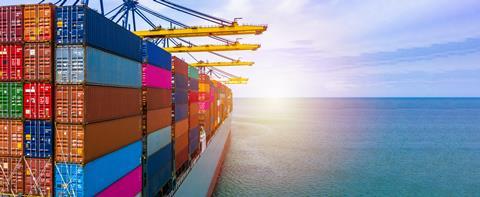Rabobank analysts believe the worst is over for Australian agricultural exporters but it will still take time for freight rates to descend from “irrational” highs

Australia’s agricultural sector can expect to contend with elevated ocean container shipping costs and ongoing supply disruptions for at least another year before a ‘normalisation’ of the global ocean freight system, according to new research from Rabobank.
In its Global Ocean Freight Outlook report, the specialist agribusiness bank said while global container freight prices are set to continue to gradually decline over the coming 12 months – from the “irrational” highs reached late last year – they are not expected to return to pre-pandemic lows.
This is a result of the broader structural factors affecting the global container shipping industry including a weaker global economy, higher operational costs, geopolitical uncertainty and imbalanced trade flows.
RaboResearch global supply chain analyst Viet Nguyen said while shipping container prices were “never” expected to return to the low pre-pandemic rates of approximately US$3,000 a container, they would decline from the current US$7,000-8,000 per container mark in the year ahead.
He said several global “macro drivers” were influencing shipping dynamics and behind the lingering high costs.
While heightened inflation and all-time low global consumer confidence levels were exerting downward pressure on ocean rates, Nguyen said, rates were being supported at higher levels by imbalanced global trade flows, which hinder a cost-effective repositioning of empty containers, as well as port congestion.
RaboResearch general manager for Australia and New Zealand Stefan Vogel said for Australia – where the agricultural sector is heavily reliant on ocean container shipping for both imported inputs (such as plant protection and machinery) and exporting goods (including meat, fruit and vegetables) to international markets – the “overall picture is a rather positive one”.
“While we are not expecting ocean freight to return to normal for the sector here before 2024, we think it is going to get better for us in Australia, and many other parts of the world, but it is not going to happen tomorrow,” said Vogel.
“It will be one or two years of ocean container freight rates tending to move slowly lower, while simultaneously reliability will improve – step-by-step – up to something closer to normal.”
Vogel said the “bad news” is that it is unlikely ocean container freight rates will return to the levels experienced before the pandemic, where “they had been extremely cheap”. However further extreme price rises to – or above – the Q4 2021 highs are also not expected.
Nguyen said strategic partnerships and long-term contracts with logistics services providers were important considerations for those in the agricultural industries relying on international shipping.
“This can be key to ensuring service reliability and minimising disruptions to their supply chains,” he concluded.



